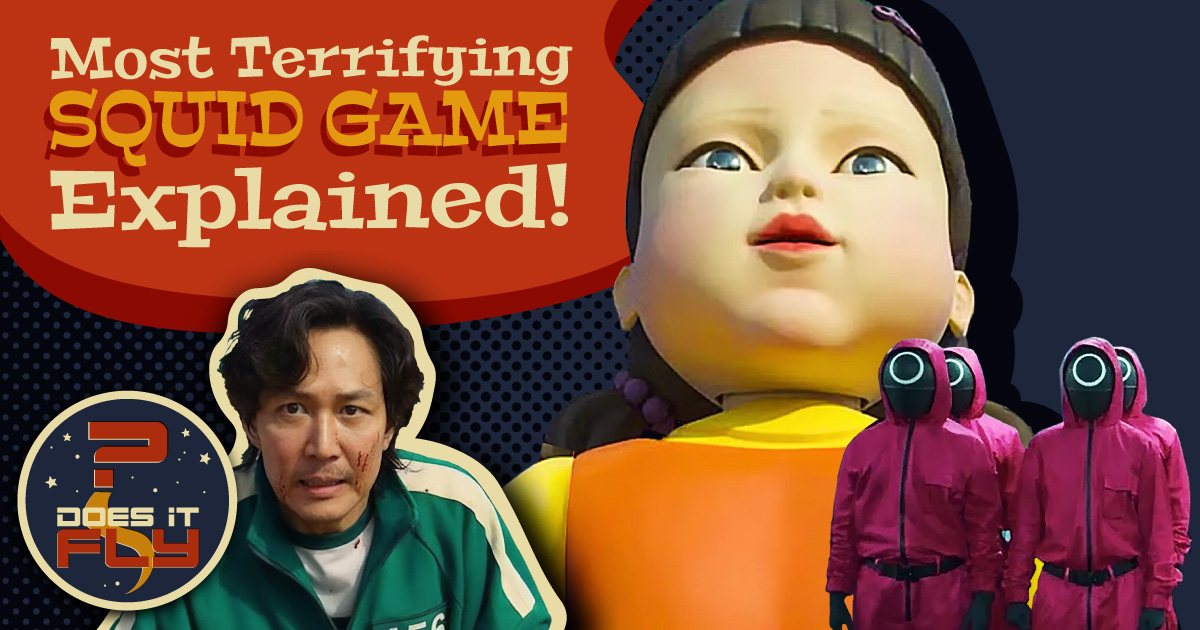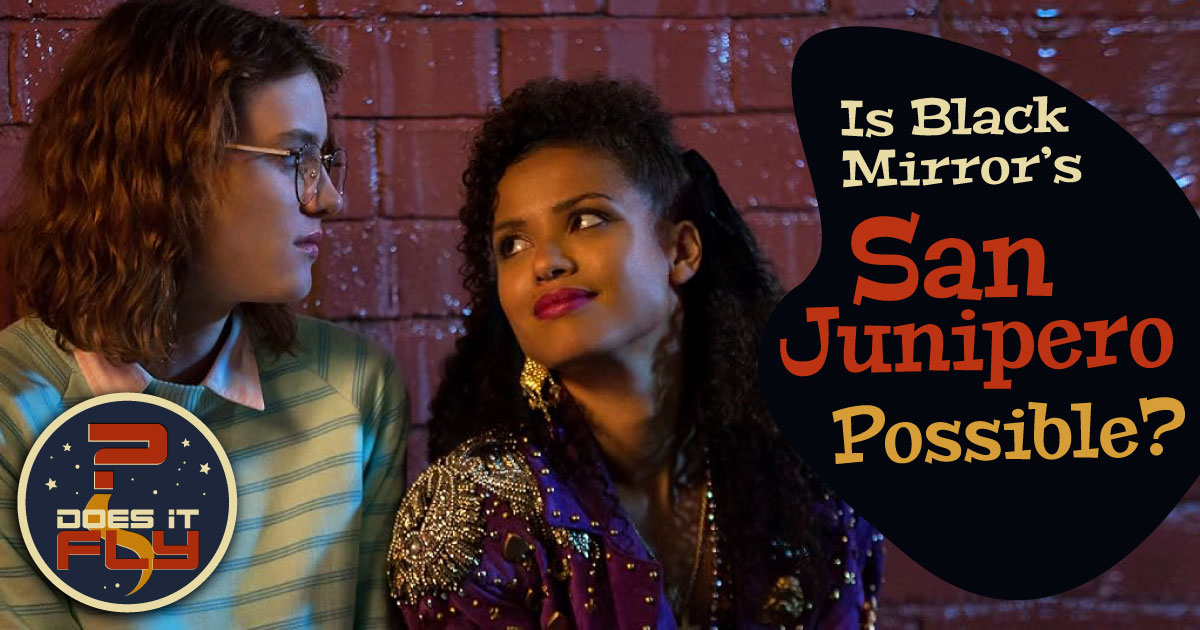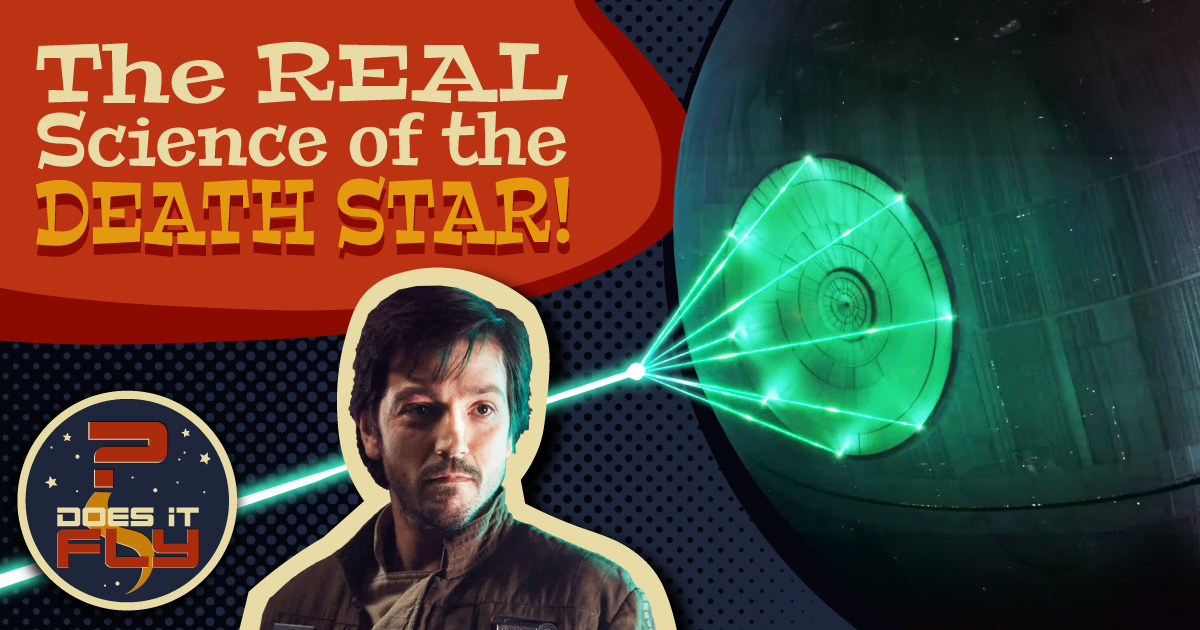How Much Would a Star Wars Death Star Actually Cost?
Today, we’re asking: what kind of real world technology would it take to construct a Death Star as seen in Star Wars Episode IV: A New Hope, Rogue One, and more?
“Now witness the power of this fully armed and operational battlestation!”
- Emperor Palpatine, shortly before nothing goes wrong for him whatsoever.
Say it with us, “that’s no moon…that’s a space station.” One of the most quotable lines in the Star Wars saga actually tells you quite a bit about the central threat of the original film (now officially known as Episode IV: A New Hope but to anyone who grew up in the ‘80s or ‘90s, it will forever be known simply as Star Wars). The Death Star, the Empire’s ultimate planet-destroying superweapon is the size of a small moon (or a large asteroid, as we’ll get to in the episode) but is actually a mobile space station that can house and deploy thousands of troops, hundreds of small ships, and packs enough firepower to turn your home planet into multiple orders of space mcnuggets.
You’d probably assume that something like the Death Star would be completely out of the realm of scientific plausibility. And you might also make assumptions about the story logic or the vibes of the Death Star, especially since the entire Star Wars franchise essentially lives or dies by its vibes. Unlike, say, Star Trek (please don’t make assumptions that we are biased simply because this is a Roddenberry production), which tries to lean heavily on the “science” part of science fiction, the Star Wars brand of sci-fi has always had a healthy dose of fantasy.
Fortunately, we have Dr. Hakeem Oluseyi and Tamara Krinsky to explain how it all works for you…and also how much it might cost to actually build one of these things. We took a look at the entire history of the Death Star, from what we see in Episode IV, Return of the Jedi, the “Starkiller Base” evolution in The Force Awakens, and even the gritty military realism of Andor and Rogue One to find our answers, which might just surprise you.
Don’t believe us? (“That…is why you fail!”) Well, padawans, watch the latest episode of Does it Fly? right here and you might just be surprised at what we found!
SUGGESTED VIEWING
Everything you really need to know about the Death Star (but were afraid to ask) is pretty much contained in Episode IV: A New Hope (we’re still calling it Star Wars), Return of the Jedi, and the truly great Rogue One. But it’s worth checking out The Force Awakens to see how the Death Star evolved into Starkiller Base. And while Rogue One prequel, Andor on Disney Plus has yet to tap into Death Star mythology…you really, really, really need to be watching that show.
But Tamara also recommends the original The Making of Star Wars documentary which has some wonderful looks at how the movie magic of the Death Star was pulled off. Track it down!
Tamara also points out a couple of classic war movies that were key inspirations for George Lucas for the assault on the Death Star: 1955’s The Dam Busters and 1964’s 633 Squadron.
FURTHER READING
Do you want to delve a little deeper into the facts, concepts, and stories Hakeem and Tamara referenced in today’s episode? Of course you do!
Mimas
No, not orange juice and prosecco! Saturn’s seventh largest moon does look suspiciously like the Death Star, doesn’t it? It’s also about 1/10th the size of The Moon, which makes it much closer in actual size to the Death Star.
Asteroid Psyche
Given the absurd cost it would take to actually build a Death Star, we’re going to need to raise some capital. Fortunately, there’s an asteroid in our solar system that may be composed entirely of materials “worth more than the entire world economy.”
Dyson Spheres
In case you’re wondering what it would take to power something like a Death Star, let’s start with a Dyson Sphere, which could potentially channel the power of an entire sun. Hey, if you’re looking to blow up a planet, do it right. Do they exist? Maybe!
It Costs HOW Much?
Never mind the price of steel and other building materials, get a load of how much firing a weapons grade laser costs. Now imagine that multiplied by how much it would take to destroy a planet!
How Star Wars Almost Didn’t Happen
“I believe it was said at the time that no science fiction picture grossed more than $10 million dollars, and no picture with War in the title ever grossed more than six or seven million. So the idea of a sci-fi film with War in the title was a pretty deadly combination.”
The article that Tamara quotes from can be found in full here, and it’s full of fascinating info!
Operation Plumbbob
We can’t explain it any better than the Atomic Heritage Foundation:
“Operation Plumbbob was a series of 29 nuclear tests conducted by the U.S. military between May 28 and October 7, 1957, at the Nevada Test Site. It was one of the longest and most comprehensive test series in the continental United States, and became controversial after much of the operation was declassified. There were several objectives during Operation Plumbbob, including improving tactical weapon design, conducting bio-medical experiments, safety testing, and component and design testing for thermonuclear systems to be detonated in future operations.”
They’ve got some pretty amazing videos of this as well.
WANT MORE FROM DOES IT FLY?
We’ve tackled Star Wars concepts before, so check out our episode on lightsabers right here!
The new season of HBO’s The Last of Us is currently giving everyone nightmares, so we told you why you maybe (?) shouldn’t worry too much…for now.
FOLLOW US!
Stay in the loop! Follow DoesItFly? on YouTube and TikTok and let us know what you think!
Subscribe to Does It Fly? Pod: https://www.youtube.com/@doesitflypod?sub_confirmation=1
And don’t forget to follow Roddenberry Entertainment:
Instagram: @RoddenberryOfficial
Facebook: Roddenberry
Bluesky: @roddenberrypod.bsky.social
For Advertising Inquiries: doesitfly@roddenberry.com
Check out the official Does it Fly? playlist, too!
MORE EPISODES

The Most Controversial Part of Jurassic Park Explained!
The notion of a dinosaur sex change is one of the central mysteries of Jurassic Park. Does life really find a way?

The Terrifying Real World Implications of Squid Game
Netflix’s Squid Game is full of disturbing life or death situations, but “Red Light, Green Light” might be the one closest to our real world…and all the problems that come along with that.

Can We Create Black Mirror’s San Junipero in Real Life?
We explore the science, morality, and story logic behind one of Black Mirror’s most celebrated episodes, the mysterious San Junipero.


